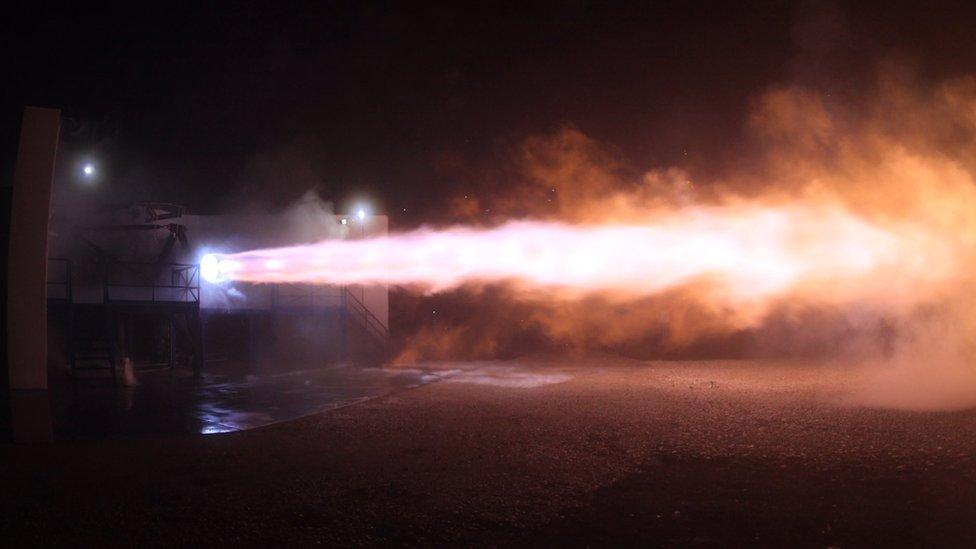SpaceX 'Mars' rocket engine tested
- Published

The Raptor engine was fired at SpaceX's test facility in McGregor, Texas
Private firm SpaceX has carried out its first test of the Raptor rocket engine, designed to send humans to Mars.
SpaceX founder Elon Musk announced, external that the engine had been fired at the company's facility in McGregor, Texas.
If his vision is realised, it could power a super-heavy launch vehicle that would transport people to the Red Planet in coming decades.
But sending astronauts on round trips to our neighbour remains a formidable challenge.
Beyond the astronomical cost, there are the technical hurdles - currently unsolved - of protecting humans from the radiation levels they would be exposed to, once in deep space.
Mr Musk is set to outline his vision for a programme to colonise Mars at the International Astronautical Congress (IAC) in Guadalajara, Mexico, external, on Tuesday.
His announcement is being watched closely because SpaceX has already made several landmark achievements for a private space company, including successful upright landings of orbital rocket stages.
In an earlier series of tweets, Mr Musk pointed out the "Mach diamonds", external in a picture of the engine test.
This is the name given to a type of wave pattern that appears in the supersonic exhaust plume of a rocket engine or jet engine.
When the Raptor was first announced in 2012, SpaceX said it would be several times more powerful than the Merlin 1 family of engines designed to power the company's Falcon launch vehicles.
And, unlike the Merlin engines, which use a combination of refined kerosene and liquid oxygen as fuel, the Raptor will be powered by liquid methane and liquid oxygen.
Raptor engines could eventually lift SpaceX's Mars Colonial Transport (MCT) towards the Red Planet.
For Mr Musk, Tuesday's speech should offer welcome respite from dealing with the fall-out of the company's launch pad explosion in September, which destroyed one of the company's Falcon 9 launchers and its payload - an Israeli-built communications satellite for Facebook.